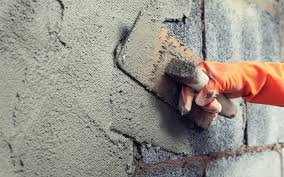Plaster and Cladding Works by Rope Access
Rope access techniques have revolutionized plaster and cladding work, particularly in high-rise buildings and hard-to-reach areas. Traditionally, scaffolding or heavy machinery would be required to reach elevated spaces, but rope access offers a safer, more efficient, and often more economical solution. Using specialized climbing equipment and techniques, trained professionals can quickly scale buildings to perform detailed plastering and cladding without the time and expense associated with scaffolding. This method is not only efficient but also minimizes disruption at ground level, which is especially beneficial in busy urban settings.




Rope Access in Cladding Installation and Maintenance
Cladding, which serves as the exterior protective layer of a building, requires exact installation for both aesthetic and functional purposes. It involves materials such as stone, metal, or composite panels, which need to be securely attached to the building’s frame. Rope access makes it possible to install or repair cladding on tall or complex structures, even where scaffolding would be impractical. This method allows for precise placement of panels, especially beneficial for custom or uniquely shaped facades.
Rope Access in Plastering Works
Plastering involves applying a layer of material, such as cement, gypsum, or lime, to walls for a smooth and finished surface. When done at height, rope access allows skilled workers to reach upper stories and irregularly shaped areas with precision. The plastering process involves surface preparation, mixing plaster, and careful application, all managed while suspended by rope. Safety measures, including secure harnesses and anchors, are crucial to ensure both stability and accuracy. Using ropes, plasterers can perform detailed work even in hard-to-access sections, achieving a consistent, durable finish across the building.

